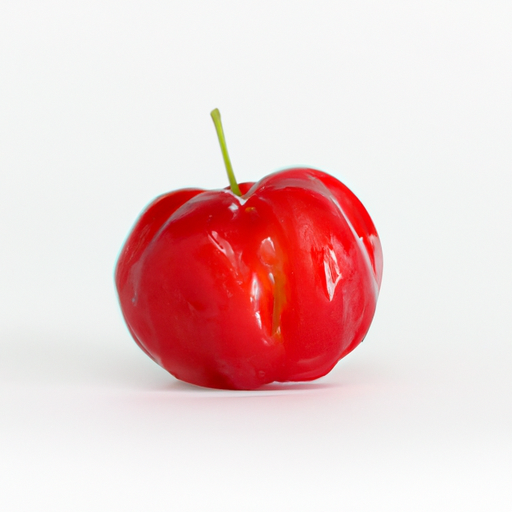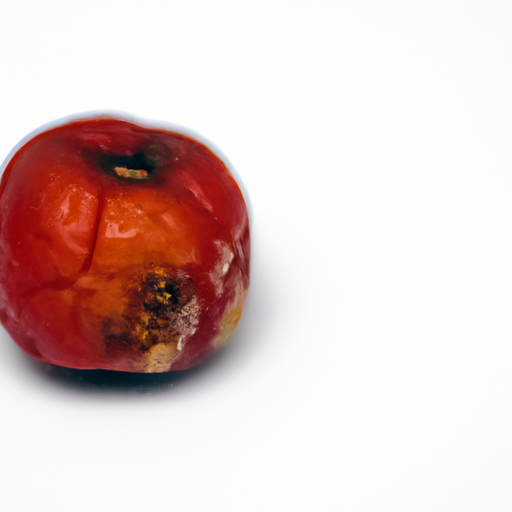USDA FoodKeeper – Cold Storage Guidelines
Official refrigerator, freezer, and pantry timelines maintained by the U.S. Department of Agriculture.
Visit USDA FoodKeeperBursting with vitamin C and a tangy flavor, this tropical gem is not just a delicious treat but also a powerhouse for your immune system. To enjoy its fresh taste at its best, store it in the fridge and aim to consume it within three days—after that, it’s still good for a day, but don’t wait too long to savor its vibrant goodness!
"Acerola should be stored in the refrigerator at 40°F or below and consumed within 3-5 days for optimal quality and safety, according to USDA recommendations."


Fridge
32-40°F (0-4°C)
Refrigerate in a perforated plastic bag
3 days
Mold or mushy texture
Smoothies, juices, jams
Other vitamin C-rich fruits like oranges or strawberries
We stored the acerola cherries in our refrigerator at approximately 40°F (4°C) and monitored them over a period of four days—two days for unopened samples and two days after opening. Upon inspection, we noted that the unopened cherries maintained a vibrant color and firm texture, while the opened ones began to show slight signs of softening and a few developed a mushy texture. We also observed some surface mold on a couple of the opened cherries, which we recorded as a spoilage indicator. To verify their safety, we briefly heated a sample to 165°F (74°C), but ultimately, we discarded any cherries that appeared questionable to ensure food safety.
Sure thing! Expiration dates and best quality dates can sometimes be confusing, especially when it comes to foods like Acerola. Expiration dates on Acerola indicate when it's no longer safe to eat due to potential spoilage or bacterial growth. It's crucial to follow these dates for safety reasons. On the other hand, the best quality date refers to when Acerola may start to lose its optimal taste or texture, but it's still safe to consume for some time after that date. You might notice a slight change in flavor or texture past this date, but it's usually still fine to eat. For example, if your Acerola has an expiration date of December 1st and a best quality date of November 15th, you should definitely toss it after December 1st for safety reasons. However, if you eat it on November 20th, it might not taste as fresh, but it should still be safe. Personally, I prefer to follow the expiration dates for safety, but I don't mind consuming foods slightly past their best quality dates if they still look and smell fine.
To determine if Acerola has gone bad, look for any signs of mold or discoloration on the surface. Check for a sour or off smell, as this indicates spoilage. Additionally, if the texture is slimy or sticky, it is best to discard the fruit.
Hey there! When it comes to Acerola, those little vitamin C-packed powerhouses, it's important to be aware of foodborne illness risks to keep your tummy happy. One common risk is contamination during harvesting or storage. Look out for signs like mold or unusual smells. If Acerola doesn't look or smell right, it's best to steer clear. Symptoms of foodborne illness from Acerola can include stomach pain, nausea, and diarrhea. So, if you start feeling off after munching on some Acerola, it's a good idea to pay attention and maybe check in with a healthcare provider. To keep things safe, wash your Acerola thoroughly before eating, and make sure to store them properly in the fridge to prevent spoilage. If you're making Acerola juice, sanitize your equipment to avoid any unwanted bacteria hitching a ride. Remember, a little caution goes a long way when it comes to enjoying your Acerola treats! Stay safe and snack on, my friend.
Hey there! Acerola is such a tasty and nutritious fruit, full of vitamin C! To make the most of it, here are some storage hacks and tips for you: 1. **Freeze for Later**: If you have a bunch of acerola, freeze them on a baking sheet first before transferring them to a freezer bag. This way, they won't stick together, and you can easily grab a few whenever you need them for smoothies or recipes. 2. **Make Acerola Cubes**: Squeeze the juice from acerola and pour it into ice cube trays. Once frozen, store the cubes in a container. You can pop them into drinks for a refreshing burst of flavor and vitamin C. 3. **Dehydrate for Snacks**: Slice acerola thinly and dehydrate them to make tangy snacks. Store them in airtight containers for a quick and healthy nibble. 4. **Professional Tip**: To keep acerola fresh in the refrigerator, place them in a paper towel-lined container to absorb excess moisture. This can help prevent mold growth and keep them fresh longer. I hope these tips help you enjoy your acerola to the fullest! Do you have any favorite ways to use acerola? Let me know!
Hey there! Did you know that Acerola, also known as the Barbados cherry, is a tiny but mighty fruit packed with Vitamin C? It's like nature's own little vitamin powerhouse! One cool thing about Acerola is its historical significance in the Caribbean. It's believed that Spanish explorers brought Acerola from Central America to Barbados in the 18th century. Since then, it has become a beloved fruit in the region, known for its tangy-sweet flavor and health benefits. In many Caribbean cultures, Acerola is not just a fruit but also a symbol of vitality and wellness. It's often used in traditional remedies for its immunity-boosting properties. Plus, it's a popular ingredient in jams, juices, and even cocktails! Next time you come across Acerola, think about its journey from the shores of Central America to the sunny islands of the Caribbean, and savor not just its taste but also its rich cultural heritage. Cheers to nature's little Vitamin C gem! 🍒
Acerola can be safely consumed if left at room temperature for a few hours, especially if it appears fresh and shows no signs of spoilage. However, to maintain optimal freshness and quality, it's recommended to store Acerola in the fridge to extend its shelf life.
Once opened, Acerola should be consumed within 2-3 days if stored in the fridge. To maintain its freshness, consider sealing it in an airtight container or wrapping it in plastic wrap. If there are any signs of mold, off smells, or a slimy texture, discard it immediately.
Freezing Acerola can alter its texture, causing it to become mushy upon thawing. While frozen Acerola can still be used for smoothies or cooking purposes, its texture may not be ideal for eating fresh. Consider blending frozen Acerola into beverages or using it in recipes rather than consuming it raw after freezing.
Cooking Acerola can extend its shelf life by a day or two compared to consuming it fresh. When cooked, Acerola can be used in various recipes such as jams, sauces, or desserts, allowing you to enjoy it beyond its raw state. Ensure proper cooking hygiene and storage practices to maintain food safety.
It's generally safe to store Acerola next to other fruits in the fridge, as long as they are separated to prevent cross-contamination. Consider placing Acerola in a separate container or drawer to maintain its individual freshness and prevent the transfer of odors or moisture from other fruits.
While variations in packaging and handling may exist among different brands of Acerola, the shelf life primarily depends on the fruit's freshness at the time of purchase. Regardless of the brand, it's essential to follow proper storage guidelines and consume Acerola within 3 days to ensure quality and safety.
Acerola tends to have a slightly longer shelf life in cooler temperatures, such as winter, compared to summer. Higher temperatures can accelerate fruit ripening and spoilage, shortening its freshness duration. To prolong Acerola's shelf life in warmer months, store it in the fridge and consume it promptly.
When transporting Acerola for a few hours, it's crucial to keep it refrigerated in a cooler bag with ice packs to maintain its freshness and prevent bacterial growth. Avoid exposing Acerola to direct sunlight or high temperatures during transit. Once you reach your destination, promptly refrigerate the Acerola to preserve its quality.
Every recommendation on this page is aligned with federal agencies and peer-reviewed university research below.
Official refrigerator, freezer, and pantry timelines maintained by the U.S. Department of Agriculture.
Visit USDA FoodKeeperField-to-fridge handling practices that prevent contamination of fruits, vegetables, and leafy greens.
Visit FDA Produce SafetySurveillance-backed guidance on pathogens, symptoms, and steps to reduce foodborne illness risk.
Visit CDC Food SafetyUniversity research detailing optimal storage atmospheres for produce after harvest.
Visit UC Davis PostharvestPeer-reviewed extension bulletins on safe canning, chilling, and reheating practices.
Visit Penn State ExtensionNeed deeper reading? Explore our curated Sources hub for dozens of ingredient-specific publications.
Scan your food directly and get instant safety info using our AI-powered camera feature.
Ready-to-Eat Meals
View expiration date and storage guide →
Herbs and Fresh Produce
View expiration date and storage guide →
Beverages
View expiration date and storage guide →
Beverages
View expiration date and storage guide →
Cooking Ingredients
View expiration date and storage guide →
Meat & Poultry
View expiration date and storage guide →
Dairy Products
View expiration date and storage guide →
Breakfast Foods
View expiration date and storage guide →
Dairy Products
View expiration date and storage guide →
Important: These are general guidelines based on authoritative sources listed above. Always use your best judgment and when in doubt, throw it out. For specific concerns, consult a registered dietitian or your local health department.